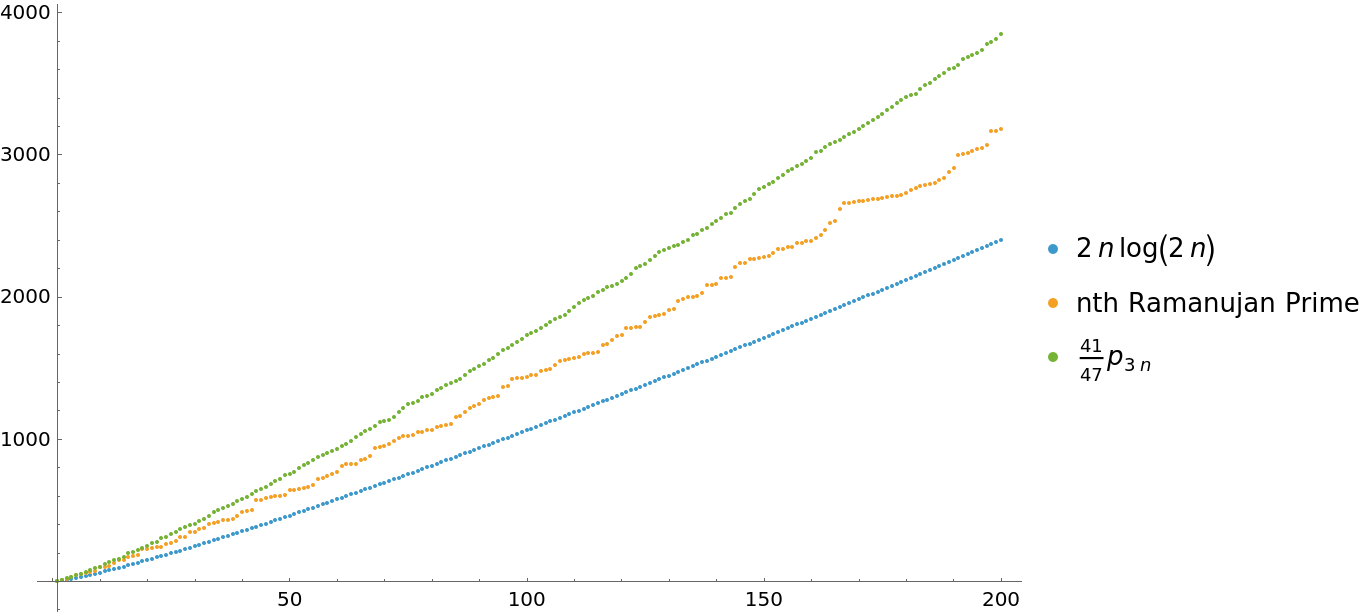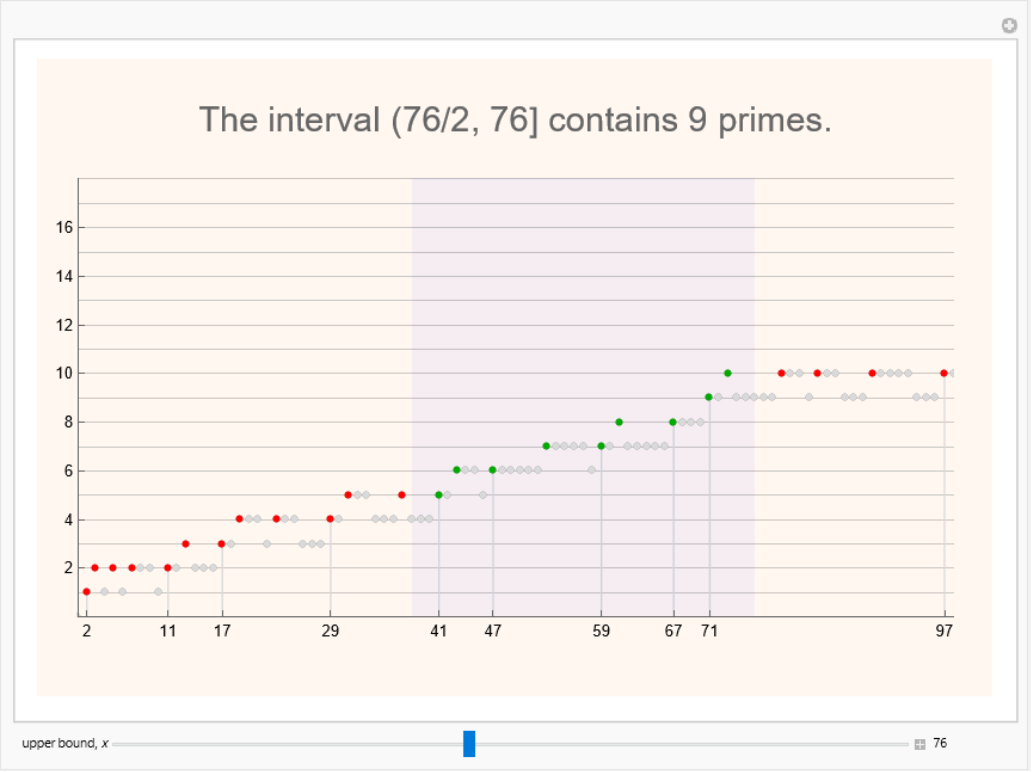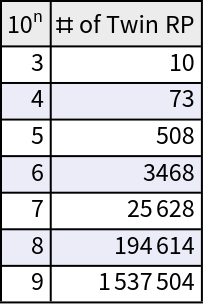Wolfram Function Repository
Instant-use add-on functions for the Wolfram Language
Function Repository Resource:
Compute Ramanujan primes
ResourceFunction["RamanujanPrimes"][n] returns the first n Ramanujan primes. |
Compute the first twenty Ramanujan primes:
| In[1]:= |
| Out[1]= |
It takes only around 9 seconds to find the all Ramanujan primes less than 109 on modern computers:
| In[2]:= |
| Out[2]= |
The largest Ramanujan prime just under 109:
| In[3]:= |
| Out[3]= |
The number of Ramanujan primes less than one billion:
| In[4]:= |
| Out[4]= |
Compute the same number using the definition of Ramanujan primes:
| In[5]:= |
| Out[5]= |
Recover the sequence of natural numbers from Ramanujan primes:
| In[6]:= |
| Out[6]= |
| In[7]:= |
| Out[7]= |
For all n>=1, we have the following bounds for the n-th Ramanujan prime:
| In[8]:= |
| In[9]:= | ![DiscretePlot[{2*n*Log[2*n], rp[[n]], 41/47*Prime[3*n]}, {n, 200}, Filling -> None, PlotLegends -> {2*n*Log[2*n], "nth Ramanujan Prime", Row[{41/47, Prime[3 n]}]}]](https://www.wolframcloud.com/obj/resourcesystem/images/e41/e41e9af1-6299-4d94-ab54-cd33d06fded2/427b768fe1291926.png) |
| Out[9]= |  |
Use "Ramanujan Primes" on Wolfram Demonstrations to visualize the patterns for small Ramanujan primes:
| In[10]:= |
| Out[10]= |  |
The input must be positive integer. Otherwise it returns unevaluated:
| In[11]:= |
| Out[11]= |
If pn+2 = pn+1, then pn and pn+1 are twin primes. If Rn+2 = Rn+1, then Rn and Rn+1 are twin Ramanujan primes; the smallest are 149 and 151. Find the number twin Ramanujan primes in the first 100k Ramanujan primes:
| In[12]:= |
| In[13]:= |
The distribution of gaps between Ramanujan primes:
| In[14]:= |
| Out[14]= |  |
The number of pairs of twin Ramanujan primes:
| In[15]:= |
| Out[15]= |
See the twin Ramanujan primes:
| In[16]:= |
| Out[16]= |  |
Import a definition of Brun's constant. This is an analogous topic:
| In[17]:= |
| Out[17]= |  |
Here only twin Ramanujan primes are applied:
| In[18]:= |
| Out[18]= |
The number of twin Ramanujan prime pairs less than 10, 100, 1000,…, 109:
| In[19]:= | ![res = ResourceFunction["RamanujanPrimes"][24491666];
loc = ResourceFunction["BinarySearch"][res, #] & /@ (10^Range[3, 9]);
ct = Count[Differences[res[[;; # - 1]]], 2] & /@ loc;](https://www.wolframcloud.com/obj/resourcesystem/images/e41/e41e9af1-6299-4d94-ab54-cd33d06fded2/25ce6a28f670d2f5.png) |
| In[20]:= | ![ResourceFunction["NiceGrid"][
Transpose@{Range[3, 9], ct}, {"\!\(\*SuperscriptBox[\(10\), \(n\)]\)",
"# of Twin RP"}, Alignment -> Right]](https://www.wolframcloud.com/obj/resourcesystem/images/e41/e41e9af1-6299-4d94-ab54-cd33d06fded2/0148b047fa42990e.png) |
| Out[20]= |  |
Wolfram Language 14.0 (January 2024) or above
This work is licensed under a Creative Commons Attribution 4.0 International License